Dangers of Coke and Cola Part 2
Let’s be afraid of everything. Let’s just hide under our desks and prepare for the catastrophe. Well, not really, but you may want to think twice about consuming that Coca Cola every day. Their marketing is superb and the drink really does make you feel good. That irresistible, crisp, refreshing pop you hear when you open that cap. When you take your first sip, you know you have reached bliss. Ok, now I’m getting ahead of myself. Recently, Coca Cola put out a statement saying that the ingredients found in their diet beverages are not harmful. Could it be because of the movement towards more suitable beverages that don’t contain 50 ingredients to make it taste good. Hmmm, like water? Anyway, Coca Cola is saying that their artificial sweetener, aspartame, is not harmful and in no way causes any of the effects that other sites claim. Let’s take a further look. What is the Danger of Coca Cola? Let’s proceed with the Dangers of Coke.
It’s the ingredients. I’m not going to go in anything that hasn’t been proven. There have been arguments, though, that the acidity in Coke has been shown to be quite high in some studies. The acidity argument, however, has been overturned in court though it is still something worth noting. Again, thankfully we have our politicians dictating our health benefits and what is or is not dangerous for us. Good thing with the slam of the gavel things can be rendered safe and non-toxic. One other note. Coca Cola was also accused of not filtering out pesticides that can cause several diseases in their products in India. But, that’s their international market…who cares right?
- Carbonated Water
- Sweetener
- Caffeine
- Phosphoric Acid
- Caramel Color
- Natural Flavorings (Mystery Ingredients)
- Sodium Benzoate (Diet Only)
- Acesulfame Potassium (Diet Only)
And that’s it. For the most part there are only 6 main components. The ones to be concerned about are the sweeteners, caffeine, phosphoric acid, and caramel color. Pretty much all of them.
Sweeteners
Depending on the formulation (IE Diet or Regular) you may find different sweeteners included in the Coke products Read your labels to determine what is in the Coke. Here’s a list of what the sweeteners that may be in the product.
Aspartame – The big debate. The head honcho. The one and the only. Aspartame is the center of all the sugary attention lately. It’s so dangerous, no wait. It’s not. In fact. It’s safe. No…wait…
Let me put it this way, since its inception aspartame’s safety has been in question. The bottom line on this issue, is regardless of whether or not it is truly safe, despite whoever is funding the studies, research etc., would you want to put something questionable in your body? Something like this has a debate surrounding it, wouldn’t this prompt you to feel threatened by its pervasiveness in nearly every diet, gum, and alternative sweetened product? With something that has so much controversy surrounding it, wouldn’t you think twice about purposely ingesting it? I mean this is something that is avoidable. Like cigarettes, nobody is forcing you to consume this product, you choose to. So then you voluntarily choose the health effects associated with it. Aside from phenylketonuria, a documented illness and one that aspartame has effects on because it breaks down into phenylalanine, those with PKU should avoid the product. But what about the rest of the issues? It has been documented that under strongly alkaline or acidic (like in the stomach) aspartame may hydrolyze into methanol.
Methanol, or wood alcohol, makes you go blind. Great, drink a diet soda, lose some vision. PERFECT! You don’t read your labels anyway! In addition, further hydrolysis of the peptide bonds leads to free radicals, that have been shown to bind to molecules in the body to cause cancer. Wait, didn’t we also conclude that the pH in Coca Cola tends to be high? So would that indicate that aspartame even breaks down before it reaches your gurgly stomach? Well the main proponent of the issues associated with aspartame is the FDA, who claim that it is
one of the most thoroughly tested and studied food additives the agency has ever approved. It’s safety is also suggested as “clear cut”. Any chemical that has safety claims that are “clear cut” already has problems. I can’t say everything that is produce in a lab is unsafe, but I can say that there is an extent of danger when using any chemical. Unfortunately, the long term usage has not really been studied too thoroughly. The most recent study conducted by the Centers for Disease Control and Prevention (CDC) was in 1984. Nearly 37 years of a product going without epidemiological studies by one of the largest and most representative healthcare agencies worldwide. And you tell me it’s still safe? In addition, every study backs up the safety of this product with use at its current levels.
Remember that methanol? Well, after its broken down further, it gets converted into formaldehyde. Yes, formaldehyde. [The embalming agent that was used and later banned because it caused cancer for those who were using it. ] Tasty? Fortunately, formaldehyde gets broken down very quickly in the body, long before it can accumulate and cause damage. But, what if some of it does? Constant dosage of aspartame may very well slowly decrease the body’s ability to process formaldehyde or see it as something that needs to be processed. Similar to how a drug addict gets tolerant of whatever drug he or she is using. This is just a thought experiment and doesn’t really hold much water. However, there are claims of cancer, neurological and psychiatric distress, weight gain and hunger and headaches. Surely these claims are true! Again, this has been proven false by the FDA.
Except for headaches, the FDA discounted all cases of danger posed with aspartame. Well, looks like trusting the government is our best bet here. We should be certain that there is no lobbyists, money, or influence behind that decision. Shh though, this is in direct competition with big sugar and nobody really wants you to know the real issues with usage of aspartame as there is billions of dollars behind it. Don’t tell anyone though! Because how inexpensive it is to produce, aspartame is even easier to obtain than raw sugar and we consume millions of pounds of this stuff. But, the FDA has spoken. Aspartame is safe and we should discount anything we were told otherwise.
Hey, don’t worry about it. Drink your diet coke. The government loves you! Enjoy!
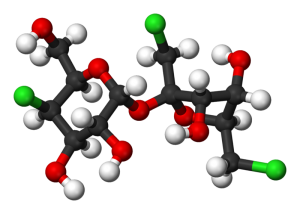 Sucralose – Also known as Splenda carries heavy weight in the diet industry. This is a very common non-caloric sweetener that is used in place of sugar in many products. It has a sweetness that can be up to 1000 times as sweet as sugar. Again, the regulatory agencies waved their magic wand and it is considered safe despite being placed in the “caution” category by the Consumer advocacy group. They state that this product “May pose a risk and needs to be better tested. Try to avoid.” But, the FDA reviewed the data and suggests that it is safe. After 2 year rodent studies, this product is now considered safe after showing no considerable carcinogenic activity. Don’t you just love the FDA? Magic wand waved. No problems with this product. No way it can be construed as dangerous. At this point, the studies pointing at sucralose really don’t have a lot of efficacy. Most were done on rodents and not humans. Unless you are a rodent consuming sucralose, you really don’t know what this chemical is doing to your body. It’s Unknown. Good or bad, the bottom line is that there is not a whole lot of information on this product to conclusively say that it is good or bad.
Sucralose – Also known as Splenda carries heavy weight in the diet industry. This is a very common non-caloric sweetener that is used in place of sugar in many products. It has a sweetness that can be up to 1000 times as sweet as sugar. Again, the regulatory agencies waved their magic wand and it is considered safe despite being placed in the “caution” category by the Consumer advocacy group. They state that this product “May pose a risk and needs to be better tested. Try to avoid.” But, the FDA reviewed the data and suggests that it is safe. After 2 year rodent studies, this product is now considered safe after showing no considerable carcinogenic activity. Don’t you just love the FDA? Magic wand waved. No problems with this product. No way it can be construed as dangerous. At this point, the studies pointing at sucralose really don’t have a lot of efficacy. Most were done on rodents and not humans. Unless you are a rodent consuming sucralose, you really don’t know what this chemical is doing to your body. It’s Unknown. Good or bad, the bottom line is that there is not a whole lot of information on this product to conclusively say that it is good or bad.
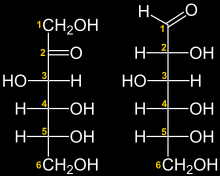 High Fructose Corn Syrup – HFCS. The big boy. It’s SUGAR! Wait. It’s super sugar and has revolutionized the way we eat–into obesity. Because of its cost, High Fructose Corn Syrup has retained it’s prominence as the premiere sweetener in almost ALL products that require sugar. Don’t believe me? Just look on that label. You’ll find that there is no Coke that is produce in the United States, or any cola for that matter, that has real sugar in it. Not only is HFCS dangerous on its own, the processing of it may leave over mercury in the finished product. As much as 45% of the samples tested did come up positive for detectable levels of mercury left over from processing. In addition to the processing of this product, it comes with the hefty bill of being…well hefty. Studies from Princeton Univeristy suggest that the HFCS can increase the amount of triglyrcerides in the body and increase the amount of fat that the body takes in. In other words, long term consumption of this garbage may be indicicative of obesity. Though, many of the research that has been done goes without conclusion and is just speculation at this point.
High Fructose Corn Syrup – HFCS. The big boy. It’s SUGAR! Wait. It’s super sugar and has revolutionized the way we eat–into obesity. Because of its cost, High Fructose Corn Syrup has retained it’s prominence as the premiere sweetener in almost ALL products that require sugar. Don’t believe me? Just look on that label. You’ll find that there is no Coke that is produce in the United States, or any cola for that matter, that has real sugar in it. Not only is HFCS dangerous on its own, the processing of it may leave over mercury in the finished product. As much as 45% of the samples tested did come up positive for detectable levels of mercury left over from processing. In addition to the processing of this product, it comes with the hefty bill of being…well hefty. Studies from Princeton Univeristy suggest that the HFCS can increase the amount of triglyrcerides in the body and increase the amount of fat that the body takes in. In other words, long term consumption of this garbage may be indicicative of obesity. Though, many of the research that has been done goes without conclusion and is just speculation at this point.
 Acesulfame Potassium – Sweet Sweet CANDY! Doesn’t that structure look like a bunch of candy balls strung together making me salivate! Oh sweet acesulfame K! How I love thee! As with most research chemicals, this one was accidentally discovered and brought into production by major corporations shortly thereafter. However, nobody cares about the actual dangers of this product. Nobody even so much as mentions it on the label that this may be carcinogenic. Meh. It doesn’t matter. What does matter is that it leaves a bitter aftertaste and when coupled with aspartame (which has the same sweetness level) they complement each other in their symbiotic relationship to cancel each others bitterness out. MMMM sweetness! But, what about the safety? Well, fortunately for you, plenty of rodent studies have been conducted on the safety and the FDA (and equivalent European authorities) have deemed it safe to consume! That’s right! They must know something that we don’t! It’s safe friends! Safe!
Acesulfame Potassium – Sweet Sweet CANDY! Doesn’t that structure look like a bunch of candy balls strung together making me salivate! Oh sweet acesulfame K! How I love thee! As with most research chemicals, this one was accidentally discovered and brought into production by major corporations shortly thereafter. However, nobody cares about the actual dangers of this product. Nobody even so much as mentions it on the label that this may be carcinogenic. Meh. It doesn’t matter. What does matter is that it leaves a bitter aftertaste and when coupled with aspartame (which has the same sweetness level) they complement each other in their symbiotic relationship to cancel each others bitterness out. MMMM sweetness! But, what about the safety? Well, fortunately for you, plenty of rodent studies have been conducted on the safety and the FDA (and equivalent European authorities) have deemed it safe to consume! That’s right! They must know something that we don’t! It’s safe friends! Safe! Aside from the minor instance in carcinogenic activity in one of the studies performed with mice, we can just dust this one under the rug though because this stuff is sweet! More research is needed, but who cares!? It’s diet and it’s sweet! Etyhlene glycol is also sweet, o wait, but that can kill you. We need something that won’t directly kill you, but will just cause cancer later one. Since the rodent studies are equivalent to the human rodent and they were largely inconclusive, this product is going to the market! The FDA says it’s fine so it must be. Go ahead, crack that can open!
Whew, that was quite a list of the sweeteners used in many soft drinks, not just coca cola. The other ingredients don’t necessarily have much to do with the flavor, but more so the color and to make sure that the product is preserved. Let’s begin.
Additives
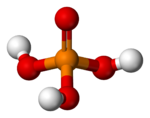 Phosphoric Acid – Also known as E338 is a food grade additive and has been documented to contribute to tooth decay when consumed in colas. It is used in medicine and dentistry for etching, cleaning and roughing up surfaces. It helps eliminate plaque build up. Too much, though, can contribute to tooth decay. Not surprisingly, it happens to be a great rust remover as well. The basic issue is the excess acidity in the beverage. There are accounts that the acidity can be dangerous to your health as it helps acidify your blood stream. The bottom line on this one is, why would you want to consume something that can remove rust? In addition, why would you want to consume any additional acids to begin with? Don’t you have enough heart burn as it is?
Phosphoric Acid – Also known as E338 is a food grade additive and has been documented to contribute to tooth decay when consumed in colas. It is used in medicine and dentistry for etching, cleaning and roughing up surfaces. It helps eliminate plaque build up. Too much, though, can contribute to tooth decay. Not surprisingly, it happens to be a great rust remover as well. The basic issue is the excess acidity in the beverage. There are accounts that the acidity can be dangerous to your health as it helps acidify your blood stream. The bottom line on this one is, why would you want to consume something that can remove rust? In addition, why would you want to consume any additional acids to begin with? Don’t you have enough heart burn as it is?
Caramel Color – E150d is used to add the color that you see in Coca Cola. Have you ever cooked onions too long? To the point where they turn brown then black? And if you try them after they are black they have a nasty acrid taste that is indicative of caramel color. The sugars caramelize and form a brownish color. Why is this so bad? So they take sugars and modify them so they caramelize? Well, Coca Cola has specifically been hit hard with this additive. In June of 2012 an independent research organization known as the Center for Science in the Public Interst published results suggesting that Coca Cola’s caramel color contained 4-Methylimidazoole or 4-MEI. THis is a known carcinogen and is required by law to carry with it a label of cancer causing properties. Coca Cola should have a label similar to cigarettes, but they do not. Instead, they have detectable and dangerous amounts of this product in their caramel color. Have they resolved anything? Probably not. This one is best to avoid. In addition, other forms of Caramel color have shown toxic carcinogens in their mix that have shown to cause cancer and must be reported. Thankfully, the FDA stepped in again and classified Caramel Color under the GRAS category which is exempt from certification. GRAS means Generally
Regarded As Safe. Really FDA? REALLY!? Enter the magic wand…
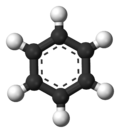
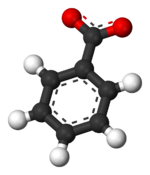 Sodium Benzoate – Now, sodium benzoate is found in a lot of foods and is classified as E211. It is pervasive in a lot of our food products and it is definitely one of those chemicals worth understanding. It is used as a bactericide and fungicide in acidic conditions so the food doesn’t spoil so fast. One thing to really note, because the structure is so similar to a benzene ring, shown right, under acidic conditions, especially with vitamin C or ascorbic acid it can produce Benzene. Benzene is often added to gasoline, among other things. This is a very toxic and carcinogenic chemical. But wait there’s more! The FDA has deemed that the levels of benzene to be found in many products are safe to consume, so don’t worry. The main issue with this chemical is that it is so close to benzene and can react to form benzene in equilibrium. This can be problematic for people who are sensitive to gas additives…
Sodium Benzoate – Now, sodium benzoate is found in a lot of foods and is classified as E211. It is pervasive in a lot of our food products and it is definitely one of those chemicals worth understanding. It is used as a bactericide and fungicide in acidic conditions so the food doesn’t spoil so fast. One thing to really note, because the structure is so similar to a benzene ring, shown right, under acidic conditions, especially with vitamin C or ascorbic acid it can produce Benzene. Benzene is often added to gasoline, among other things. This is a very toxic and carcinogenic chemical. But wait there’s more! The FDA has deemed that the levels of benzene to be found in many products are safe to consume, so don’t worry. The main issue with this chemical is that it is so close to benzene and can react to form benzene in equilibrium. This can be problematic for people who are sensitive to gas additives…
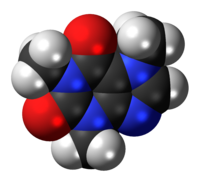 Caffeine – There is quite some debate right now about the safety of caffeine. It does exist naturally and in amounts that are tolerable to humans. We all know this stuff is in our coffee, tea, energy drinks and many other products. It is the worlds most highly consumed psychoactive stimulant to date. For the most part, caffeine is safe, but like anything else should be avoided by pregnant women. The toxicity of it is fairly high and you need to ingest a large amount to overdoes. Extremely high doses can cause death. In order to achieve a high dose of this stuff you need to drink nearly 100 cups of coffee or the equivalent. Coca Cola contains roughly 34mg of caffeine per serving or aobut 96mg/L. The least chemical to worry about in Coca Cola would be the caffeine content, unless of course you are sensitive to it. However, it has been shown that caffeine may even have cardiac and neuroprotective effects in humans. We wouldn’t worry too much about this additive.
Caffeine – There is quite some debate right now about the safety of caffeine. It does exist naturally and in amounts that are tolerable to humans. We all know this stuff is in our coffee, tea, energy drinks and many other products. It is the worlds most highly consumed psychoactive stimulant to date. For the most part, caffeine is safe, but like anything else should be avoided by pregnant women. The toxicity of it is fairly high and you need to ingest a large amount to overdoes. Extremely high doses can cause death. In order to achieve a high dose of this stuff you need to drink nearly 100 cups of coffee or the equivalent. Coca Cola contains roughly 34mg of caffeine per serving or aobut 96mg/L. The least chemical to worry about in Coca Cola would be the caffeine content, unless of course you are sensitive to it. However, it has been shown that caffeine may even have cardiac and neuroprotective effects in humans. We wouldn’t worry too much about this additive.
Natural Flavoring – …Well this could mean just about anything. Considering that Coca Cola has not been upfront and honest about the dangers of its products, one cannot say with certainty that this is entirely natural or safe. You are putting blind faith in the company at this point and these flavors could literally be anything. These are the proclaimed mystery ingredients that I mentioned above. Here’s how the FDA categorizes natural flavors:
“…the essential oil, oleoresin, essence or extractive, protein hydrolysate, distillate, or any product of roasting, heating or enzymolysis, which contains the flavoring constituents derived from a spice, fruit or fruit juice, vegetable or vegetable juice, edible yeast, herb, bark, bud, root, leaf or similar plant material, meat, seafood, poultry, eggs, dairy products, or fermentation products thereof, whose significant function in food is flavoring rather than nutritional” (21CFR101.22).
Basically, anything the food scientists dream up in a ab that fall under these categories can be considered natural flavorings. Yum!
Notice a trend here? Most of the studies done are inconclusive and published by the FDA, a trusted governmental resource in the health and safety of consumers. The FDA has never misrepresented any industry. It is always right. No seriously, though. The trend here is that a lot of these compounds are poorly researched, or the studies conducted are not actually testing the right variables, have the correct amount of participants, or lack reliability or validity. Oddly enough, without huge research these compounds enter mass circulation immediately. According to Mercola, a renowned physician and expert in many health fields, the FDA has a history of missing data and side stepping important information. Do you really trust the government is here to protect you? Or is it here to protect its money? Vote with you dollars and simply stop consuming these dangerous products in support of using chemicals to poison the masses. Unless you don’t care at all about your health, in which case: bottoms up!

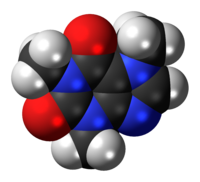

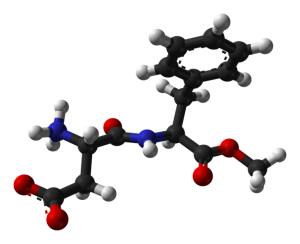



Recent Comments